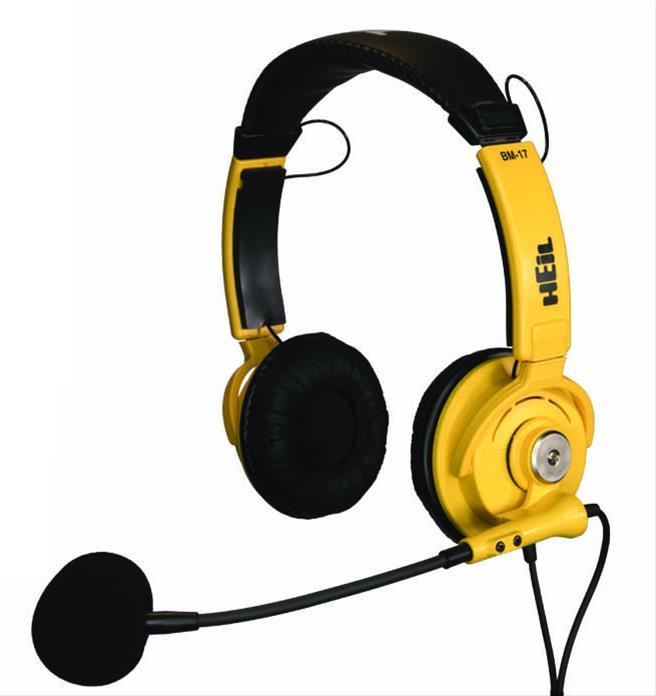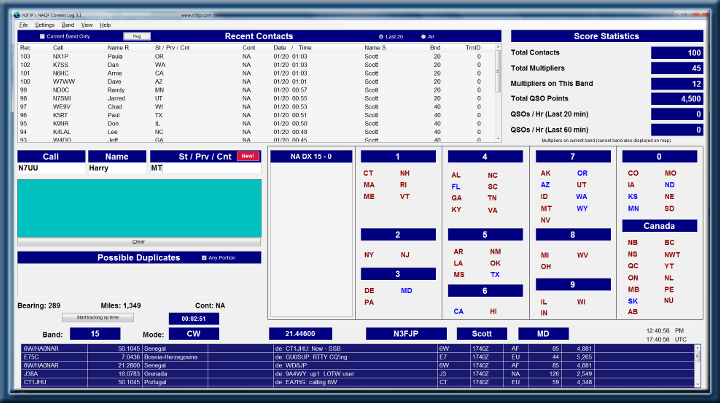Field Day was fun, wasn’t it? Maybe you’re thinking, “I can do that from home!” And so you can—this discussion is about how to have some success with a modest station in the upcoming summer contests and beyond. We’ll focus on HF contests using CW or voice, but many of the tips translate to digital contests, too.
What Should You Expect?
To avoid frustration, it’s good to have reasonable expectations. As you probably found out, “there’s kindy a knack to it” as my great-aunt Lexie would say. Most Field Day stations use low power and modest antennas, so your experience from home is likely to be similar.
Field Day is a major operating event with literally thousands of operators and many hundreds of stations, big and small, on the air at the same time. The noise level on the band is higher, interference from adjacent stations is stronger, and the clear channels available through the week have all gone missing. The same is true during contests. You’ll have more fun as a low-power participant by being aware of and responding to those challenges.

You should expect your first few contests to be opportunities for learning. You’ll find out where activity is on the bands. You’ll learn how and when to call other stations. Your eyes and ears will get a workout as they learn to deal with crowded bands and competing stations. Some of those knobs and controls on your equipment should get a lot more work than usual, too! This is all tiring, just like trying a new exercise or sports program can be. Go at it for a while, then take a break to consider “what just happened?” Catch your breath and go back on the air for another session. Treat every QSO as a success—because it is!
Will you win your category, state or division? Honestly, probably not, but you will fill your log and, very importantly, get your call sign in the logs of other stations for next time. You’ll learn a few things and be better prepared. Even the biggest, strongest and fastest stations learn something new every time. They will tell you that the secret to success is practice, practice, practice. Ready?
Contest Equipment Basics
You don’t need a bazillion-dollar station to contest. Let’s assume you are using wire antennas or a multi-band vertical like a Butternut HF6V. A small beam at even modest height will help a lot but isn’t required. You should have a modern transceiver with a receiving filter installed for each mode or adjustable DSP filtering to cut through some of that interference. (This is a good time to learn how to adjust your filter settings!)
Headphones are a must, both to help you hear clearly and to avoid “local QRM” at home. You probably have headphones already but contesting with a hand microphone will make you wish you had a boom set—a pair of headphones with a microphone attached as shown in the figure. For digital modes, a nice big display that’s easy on your eyes is important in the same way hearing clearly is important for analog modes.

Heil Sound is a well-known name in Ham Radio contesting and offers a wide variety of booms sets to fit your budget.
Speaking of easy—can you sit in your station chair for long periods of time? A crucial element for success is Butt In Chair time or BIC. You can’t make QSOs if your butt is not in the chair. Many a first-place finish has come from simply outlasting the other stations! A good chair with adjustable height and angle is not very expensive and may be the best money you can spend when you’re starting out. A comfortable operator is an engaged and focused operator.
Next, make things easy on yourself by using computer logging. Paper logging is OK in your first couple of contests, but getting set up to log QSOs on a computer saves a lot of work during and after the contest. If your club computer-logged on Field Day, what program did they use? You can start with that program. If you already use logbook software, see if it has a contest-logging feature. Or you can start with one of the popular contest loggers. N3FJP, Writelog, and N1MM+ are three common programs in order of increasing complexity and features. Start simple and work your way up.

Receiving is challenging during a contest, so practice using all those interesting receiver features like RIT, passband tuning, noise reduction, adjustable bandwidth and upper/lower cutoff frequencies. (Tip: Turn OFF noise blankers and preamps because they make your receiver too susceptible to overload by strong signals. Learn how to use the “ATT” attenuator function, too.)
Take a look at how your station is set up. The most commonly used items (the computer followed by the radio) should be close together and easy to see at the same time. Frequently-used accessories like filters, antenna switches, and antenna tuners should be easy to reach without stretching. Clear off your desk and get rid of clutter that gets in the way of operating. If you’re going to be operating on phone, spend some time on the air with a friend adjusting your microphone gain and audio settings for a clean, crisp signal without splatter or distortion. OK, you’re all set!
Next Week—Part 2, Tips and Techniques on Making QSOs

